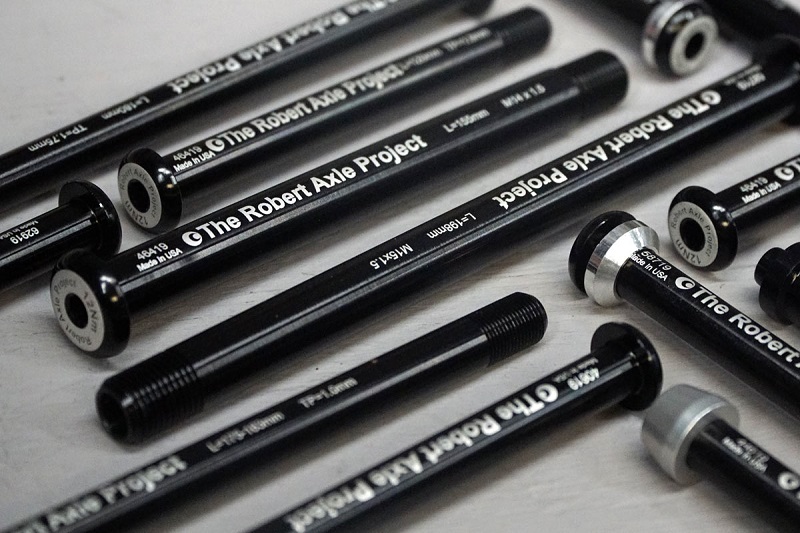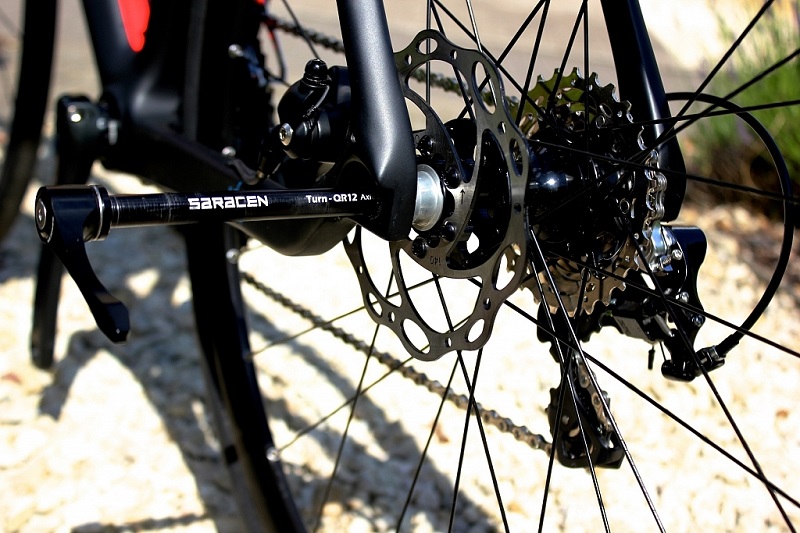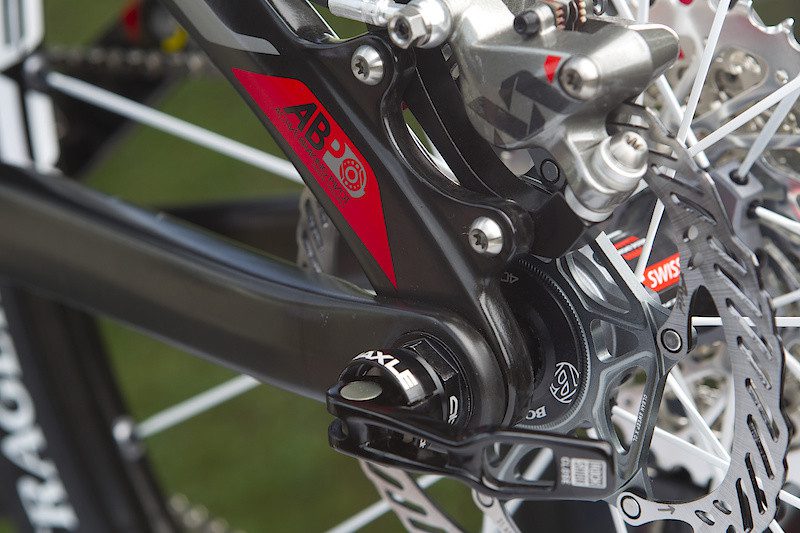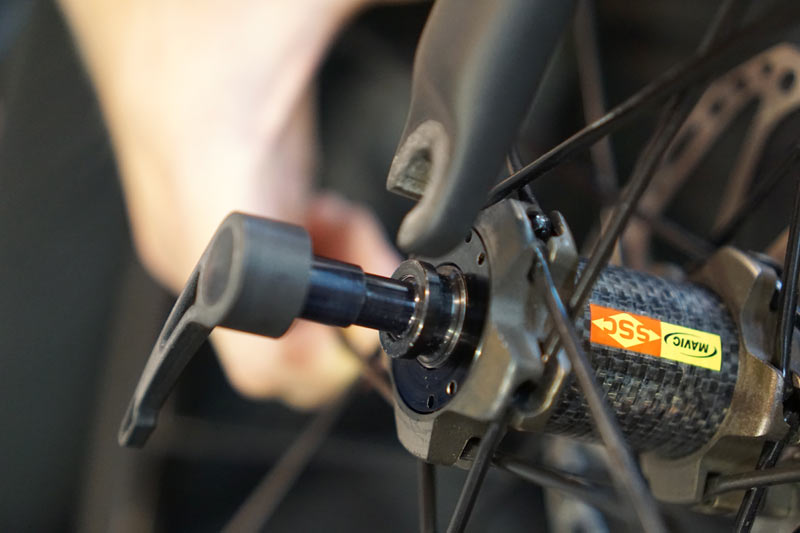Parts
What Is A Through Axle On A Bike?
In the world of cycling, innovations and advancements are a constant presence. One such innovation that has gained significant traction in recent years is the through axle, often referred to as a thru-axle. This robust and highly effective technology has transformed the way we think about bike stability, safety, and performance. In this article, HookBike’s will delve into the intricacies of through axles, exploring what is a through axle on a bike, how they work, and their numerous advantages over traditional quick-release skewers.
What Is A Through Axle On A Bike?
To understand the concept of a through axle, let’s first break it down into its basic components. A through axle is a type of axles system used in modern bicycles to secure the wheels to the frame. Unlike traditional quick-release skewers, which have been used for decades, through axles are sturdier and more reliable.
A through axle consists of the following key elements:
Axle Shaft
The central component of a through axle is the axle shaft, which runs through the hub of the wheel and attaches to the bike’s frame. It is typically a solid, thick rod that provides exceptional stiffness and strength.
Threaded Ends
Through axles have threaded ends that extend beyond the frame and wheel. These threaded ends allow for precise adjustment and secure attachment.

Lever or Tool
To tighten and release a through axle, you may need a specific lever or tool, depending on the design. This extra step ensures a snug and secure fit, reducing the risk of accidents related to wheel instability.
Through axles are used to secure wheels to the frame or fork of bicycles, motorcycles, and other similar vehicles. They offer advantages in terms of security, stiffness, and stability compared to quick-release skewers. However, it’s essential to choose the right through axle that matches the specific requirements of your vehicle, as different standards and sizes exist.
How Does a Through Axle Work?
Through axles work on the principle of enhanced stability and security. Let’s explore how this system functions and why it has become the preferred choice for many cyclists.
Enhanced Structural Integrity
Through axles provide superior structural integrity compared to quick-release skewers. The solid axle shaft offers greater resistance to flexing and bending, resulting in improved wheel alignment and reduced stress on the frame.
Minimized Displacement
Traditional quick-release skewers can allow for slight wheel movement, which can negatively impact handling and safety, especially at high speeds or on rough terrain. Through axles minimize wheel displacement, ensuring a consistent and predictable riding experience.
Increased Stiffness
The threaded ends of through axles allow for precise tightening, creating a stiffer connection between the wheel and the frame. This stiffness translates to better power transfer, making your pedal strokes more efficient.
Safety and Reliability
Through axles reduce the risk of accidents caused by improperly secured wheels. The additional step of using a lever or tool ensures that the wheels stay firmly in place, even during the most demanding rides.
Advantages of Through Axles
Now that we have a fundamental understanding of what through axles are and how they work, it’s essential to highlight the numerous advantages they offer over traditional quick-release skewers.
Improved Handling
Through axles enhance the bike’s stability and handling, making it easier to navigate corners and descents with confidence. The reduced wheel displacement ensures a consistent riding experience.

Axle Design
Through axles are a solid axle that passes completely through the wheel hub and the frame or fork. This design provides a more secure connection and better stability compared to quick-release skewers, which are hollow and close with a lever.
Diameter and Thread Pitch
Through axles come in various diameters and thread pitches, depending on the type of bike and its intended use. Common sizes include 12mm and 15mm for mountain bikes and 12mm for road and cyclocross bikes. Motorcycle through axles are generally larger and stronger.
Enhanced Safety
Safety is paramount in cycling. Through axles significantly reduce the risk of wheel-related accidents, which can be especially crucial for mountain bikers and riders on rough terrain.
Better Power Transfer
The stiffness provided by through axles results in more efficient power transfer. You’ll feel the difference in every pedal stroke, especially when accelerating and climbing.
Compatibility
Many modern bike frames and forks are designed to accommodate through axles. This compatibility ensures that you can enjoy the benefits of this technology without compatibility issues.
Versatility
Through axles are not limited to a particular type of bike or riding style. They are widely used in road bikes, mountain bikes, and even gravel bikes, offering versatility and performance benefits across the board.

Through axles have become more common on modern bicycles, particularly on mountain bikes, cyclocross bikes, and high-end road bikes, as they offer several advantages in terms of security and performance. However, if you are considering upgrading or replacing a through axle on your bike, it’s crucial to ensure compatibility with your frame or fork, as different standards exist.
Choosing the Right Through Axle
Choosing the right through axle for your bicycle or motorcycle is important to ensure proper fit, safety, and performance. Here are some key considerations when selecting a through axle:
Axle Diameter and Length
The first and most crucial consideration is the diameter and length of the through axle. The axle diameter is typically measured in millimeters (e.g., 12mm or 15mm for bicycles). Measure your existing axle or check your bike’s specifications to determine the correct diameter. The length of the axle should match the width of the frame or fork.

Thread Pitch
Ensure that the thread pitch of the through axle matches the thread pitch on your frame or fork. This is critical for a secure fit. Common thread pitches for through axles are 1.0mm, 1.5mm, or 1.75mm, depending on the manufacturer and model.
Compatibility
Through axle standards are not standardized across all bike and frame manufacturers. Different brands and models may use their own specific through axle standards. Check your bike’s manual or contact the manufacturer to determine the exact specifications you need. This includes the overall length, thread length, and any specific features required for your frame or fork.
Type of Bike
Consider the type of bike you have. Mountain bikes, road bikes, and other types of bicycles may use different through axle standards. Ensure you are choosing an axle designed for your specific type of bike.
Hub Compatibility
Ensure that the axle is compatible with your wheel hub. Some hubs are designed for specific axle diameters and may not be adaptable to other sizes. Make sure the hub can accommodate the chosen through axle.
Material and Weight
Through axles are typically made of materials like aluminum or steel. Consider the weight of the axle if you’re looking to save weight on your bike. Lighter materials are often used in high-performance applications, but they can be more expensive.
Safety and Tightening Torque
Follow the manufacturer’s recommendations for tightening torque. Over-tightening can damage the frame or fork, while under-tightening can lead to accidents. Use a torque wrench to ensure proper installation.

It’s important to note that through axle standards are not universal, and there can be variations between different brands and models. Always refer to your bike’s manual or contact the manufacturer for precise axle specifications, and if you’re unsure, consider seeking advice from a professional bike shop or a mechanic to ensure you get the right through axle for your specific setup.
The Future of Cycling: Through Axles
As cycling technology continues to evolve, through axles have firmly established themselves as a staple in modern bike design. Their enhanced stability, safety, and performance benefits have made them a popular choice among cyclists of all levels. Whether you’re a professional racer looking for that extra edge or a recreational rider seeking a more enjoyable experience on the road or trail, through axles are a game-changer.
In conclusion, a through axle on a bike is a revolutionary advancement that has redefined the cycling experience. Its robust design, enhanced safety features, and improved performance make it a compelling choice for riders across the spectrum. As you consider the best options for your bike, take into account the advantages that a through axle can provide, and embrace the future of cycling technology.

